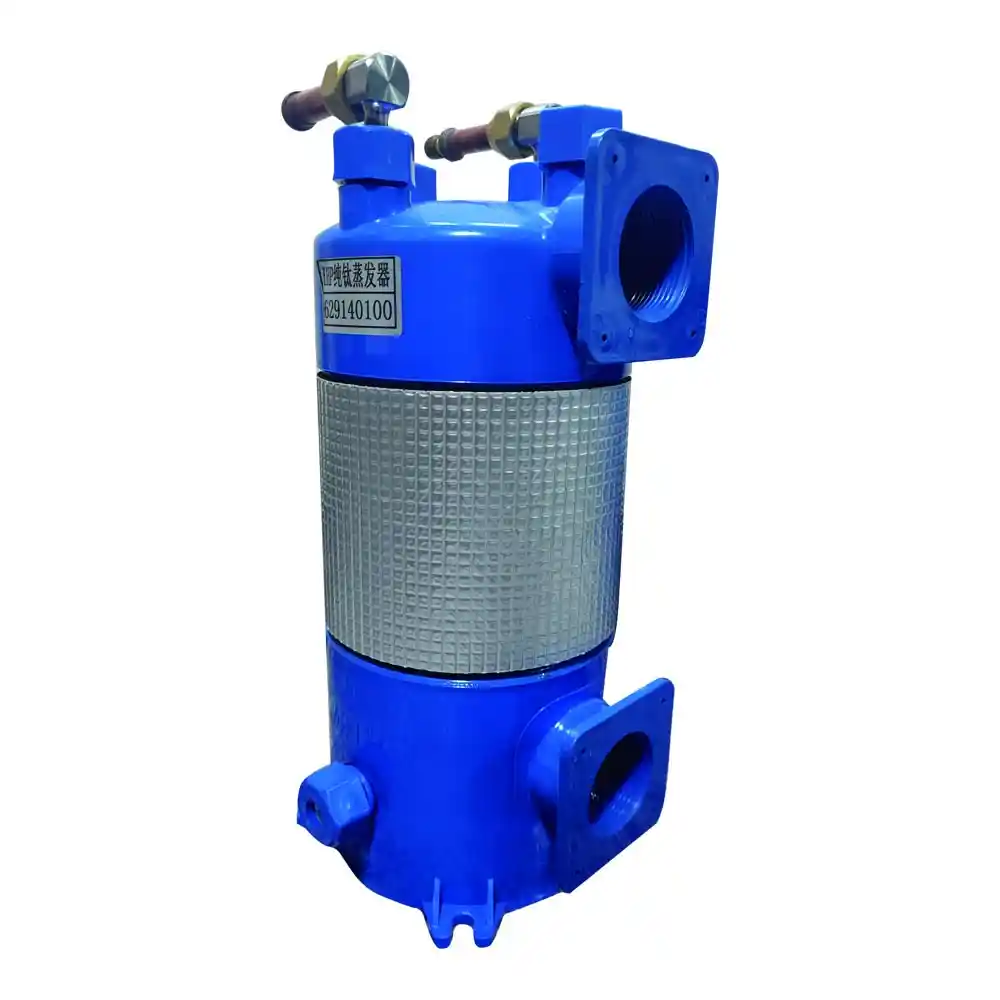1. Introduction
Tube-to-shell connectors are essential components in the construction of titanium coil heat exchangers. They provide a vital interface between the inner coil tubing and the outer shell, facilitating efficient heat transfer. This article explores the significance of tube-to-shell connectors in titanium coil heat exchangers, their impact on performance and reliability, and provides a comprehensive analysis of their characteristics and suitability for various applications. We will delve into the design principles, advantages, and limitations of tube-to-shell connectors, supported by relevant data and comparative analysis.
2. Understanding Tube-to-Shell Connectors in Titanium Coil Heat Exchangers
Tube-to-shell connectors offer several key advantages when used in titanium coil heat exchangers:
2.1 Secure Tube Integration
Tube-to-shell connectors ensure secure integration between the coil tubing and the outer shell of the heat exchanger. They provide a reliable seal that prevents fluid leakage and maintains the integrity of the system. The connectors enable proper alignment and attachment of the tubes to the shell, creating a robust and durable structure.
2.2 Enhanced Heat Transfer Efficiency
Efficient heat transfer is crucial in heat exchangers, and tube-to-shell connectors play a vital role in achieving optimal performance. The connectors facilitate maximum contact between the coil tubing and the shell, allowing for efficient heat exchange between the hot and cold fluids. This promotes higher heat transfer rates, resulting in improved overall efficiency of the heat exchanger.
2.3 Adaptability and Versatility
Tube-to-shell connectors offer adaptability and versatility in the design and construction of titanium coil heat exchangers. They can be customized to accommodate different tube sizes, configurations, and materials. This flexibility enables engineers to optimize the heat exchanger for specific applications, ensuring maximum heat transfer and operational effectiveness.
3. Limitations and Considerations
While tube-to-shell connectors provide significant benefits, it is important to consider their limitations and potential challenges:
3.1 Corrosion and Compatibility
Titanium coil heat exchangers are often used in corrosive environments, and compatibility between the tube-to-shell connectors and the working fluid is crucial. It is essential to select connectors that are resistant to corrosion and compatible with the operating conditions and fluids involved. This ensures the long-term reliability and lifespan of the heat exchanger.
3.2 Thermal Expansion and Stress
Temperature variations can lead to thermal expansion and stress in the heat exchanger components, including the tube-to-shell connectors. It is important to consider the thermal properties and coefficients of expansion of the materials used in the connectors to minimize the risk of distortion or failure. Proper design and engineering practices, including appropriate clearances and allowances for thermal expansion, should be followed to ensure the integrity of the system.
4. Comparative Analysis of Tube-to-Shell Connector Types
Let’s compare the performance and characteristics of commonly used tube-to-shell connector types in titanium coil heat exchangers:
| Connector Type | Advantages | Limitations |
|---|---|---|
| Threaded Connectors | – Easy installation and removal | – Limited to low-pressure applications |
| – Suitable for smaller heat exchangers | – Potential for leakage at higher pressures | |
| – Cost-effective | ||
| Flanged Connectors | – Excellent sealing capabilities | – More complex installation process |
| – High-pressure applications | – Higher costs compared to other connector types | |
| – Allows for easy disassembly | ||
| Quick Couplings | – Quick and easy connection/disconnection | – Limited to low-pressure applications |
| – Suitable for frequent maintenance | – Potential for leakage at higher pressures | |
| – Reduced downtime and maintenance costs |
Note: The table above provides a comparative analysis of tube-to-shell connector types commonly used in titanium coil heat exchangers. The selection of a specific connector type depends on various factors such as operating conditions, pressure requirements, installation ease, and maintenance considerations. Consulting with heat exchanger experts and adhering to industry standards is recommended for optimal connector selection.
5. Conclusion
Tube-to-shell connectors play a critical role in ensuring efficient heat transfer in titanium coil heat exchangers. Their secure integration, ability to enhance heat transfer efficiency, and adaptability contribute to the overall performance and reliability of the heat exchanger system. However, it is important to consider factors such as corrosion resistance, thermal expansion, and the specific requirements of the application when selecting the appropriate tube-to-shell connector type.
By conducting a comparative analysis of connector types and understanding their advantages and limitations, engineers and designers can make informed decisions in the design and construction of titanium coil heat exchangers. This knowledge leads to optimized heat exchanger performance, improved energy efficiency, and extended system lifespan.


